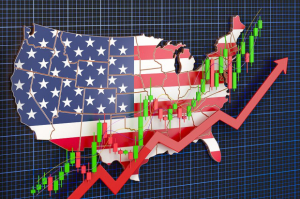How Does the S&P 500 Work?
Unlike indexes that simply average stock prices, the S&P 500 is market capitalization-weighted. This means that companies with higher market values (like Apple or Microsoft) carry more influence in the index. The total market cap of all 500 companies determines the index's value, so larger companies have a bigger impact on its movement.
What is the Average Return of the S&P 500?
Historically, the S&P 500 has provided long-term investors with an average annual return of about +10%, including dividends. While short-term fluctuations can occur due to market volatility, the index has shown strong performance over the decades, especially when investments are held over longer periods.
How Long Has the S&P 500 Been Around?
The S&P 500 was introduced in 1957, though its origins trace back to earlier versions of Standard & Poor's stock lists in the 1920s. Since its official launch, it has become a primary tool for tracking the performance of the U.S. equity market.
Why Are S&P 500 Index Funds Popular?
Index funds that mirror the S&P 500 are popular because they offer instant diversification, low fees and consistent returns over time. By investing in a single fund, individuals gain exposure to a broad range of sectors and industries, reducing the risk associated with investing in individual stocks.
Who Decides What Goes Into the S&P 500?
A committee at S&P Dow Jones Indices is responsible for selecting the companies in the index. To qualify, companies must meet strict criteria, including a minimum market cap, positive earnings over recent quarters and being based in the U.S. The index is reviewed regularly, and changes are made as needed to reflect the evolving market.
What Companies Are Included in the S&P 500?
The index includes a mix of the largest U.S. companies across various sectors such as technology, healthcare, finance, consumer goods and energy. Notable examples include:
- Apple Inc.
- Amazon
- Microsoft
- Johnson & Johnson
- JPMorgan Chase
- Tesla
These firms represent a broad snapshot of the American economy.
How to Invest in S&P 500 Index Fund
Investing in the S&P 500 can be done through index funds or exchange-traded funds (ETFs) that aim to replicate the index’s performance. These funds are available through most brokerage accounts and retirement plans like 401(k)s or IRAs. Popular options include funds from Vanguard, Fidelity and Schwab. Once purchased, these funds automatically track the S&P 500’s composition and performance.
How to Choose an S&P 500 Fund
When selecting an S&P 500 fund, consider the following:
- Expense ratio: Lower fees help boost returns over time.
- Tracking accuracy: Some funds follow the index more closely than others.
- Fund provider reputation: Well-known companies often offer better customer service and reliability.
- Minimum investment requirements: Some funds require higher upfront contributions.
Look for well-established funds with a track record of closely mirroring the S&P 500.
What Does the S&P 500 Measure
The S&P 500 measures the stock performance of 500 leading U.S. companies, reflecting a broad view of the U.S. economy. It’s a key tool for investors and analysts who want to track how large-cap companies are doing in various sectors.
5 Best S&P 500 Index Funds
Here are five widely respected S&P 500 index funds for long-term investing:
- Vanguard 500 Index Fund (VFIAX or VOO) – Known for low costs and wide accessibility.
- Fidelity 500 Index Fund (FXAIX) – Offers no minimum investment and ultra-low expenses.
- Schwab S&P 500 Index Fund (SWPPX) – Popular for new investors thanks to its $0 minimum.
- SPDR S&P 500 ETF (SPY) – One of the oldest and most traded ETFs tracking the index.
- iShares Core S&P 500 ETF (IVV) – Strong competitor to SPY with a similar portfolio and lower cost.
Each of these funds offers exposure to the S&P 500 with slightly different features depending on investor needs.
S&P 500 vs Dow Jones
The S&P 500 and the Dow Jones Industrial Average both measure the performance of U.S. stocks, but they differ in structure:
- S&P 500: Tracks 500 companies, market-cap weighted, and is considered more representative of the U.S. economy as a whole.
- Dow Jones: Tracks only 30 large firms and is price-weighted, meaning stocks with higher share prices influence the index more. (Learn more: What is the Dow Jones Industrial Average?)
Due to its broader scope and weighting methodology, many investors and analysts see the S&P 500 as a more accurate gauge of overall market performance.
Note: This story is for educational purposes only and is not financial advice. Always consult a financial advisor or conduct your own research before making investment decisions. Inherent in any investment is the potential for loss.
The S&P 500 is an unmanaged index.
Learn more:









